Managing a stable full of horses demands significant time, effort, and dedication. Horse owners and stable managers know all too well the daily grind of feeding, mucking stalls, turnout routines, and general maintenance that comprises barn life. With the average horse owner spending approximately 2-3 hours daily on basic care tasks, finding efficient methods to complete barn chores becomes essential for both professional facilities and hobby farms alike. The quest for the “most efficient” approach to horse care is ongoing, with new techniques, tools, and systems regularly emerging. This article explores various approaches to barn chore efficiency that could revolutionize your horse care routine, saving time while maintaining or even improving the quality of care your equine companions receive.
The Time Cost of Traditional Barn Management
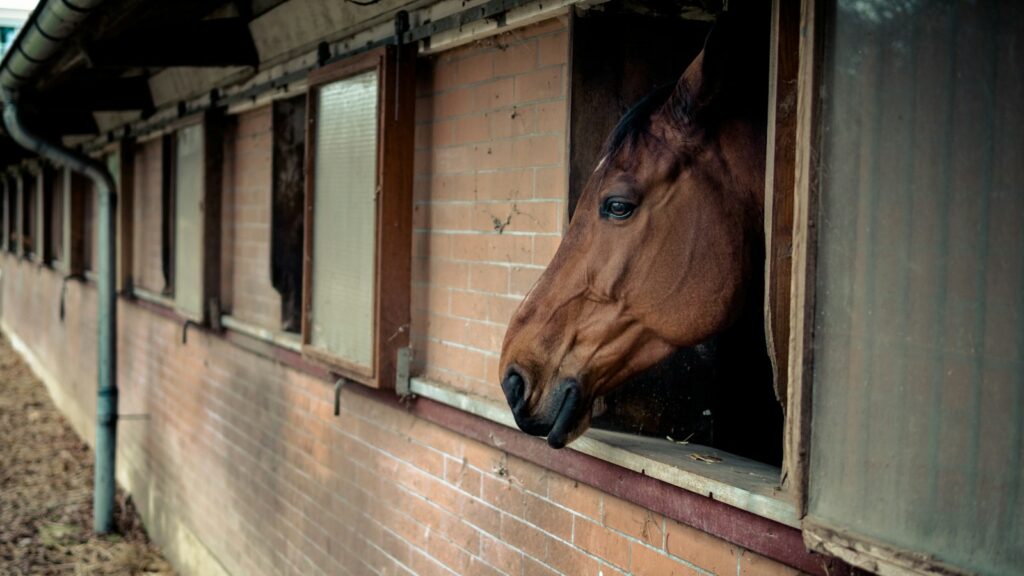
Traditional barn management practices have remained largely unchanged for generations, with manual labor forming the backbone of horse care routines. The average horse owner spends approximately 30 minutes per stall for daily cleaning, another 20-30 minutes on feeding routines per meal, and additional time on turnout, grooming, and facility maintenance. For a modest barn with just eight horses, this easily translates to 4-6 hours of daily work. Commercial facilities and boarding barns often require multiple staff members working full shifts to maintain proper care standards. This significant time investment has prompted many to seek more efficient alternatives, especially as labor costs rise and finding reliable help becomes increasingly challenging in the equestrian industry.
Strategic Barn Design for Maximum Efficiency
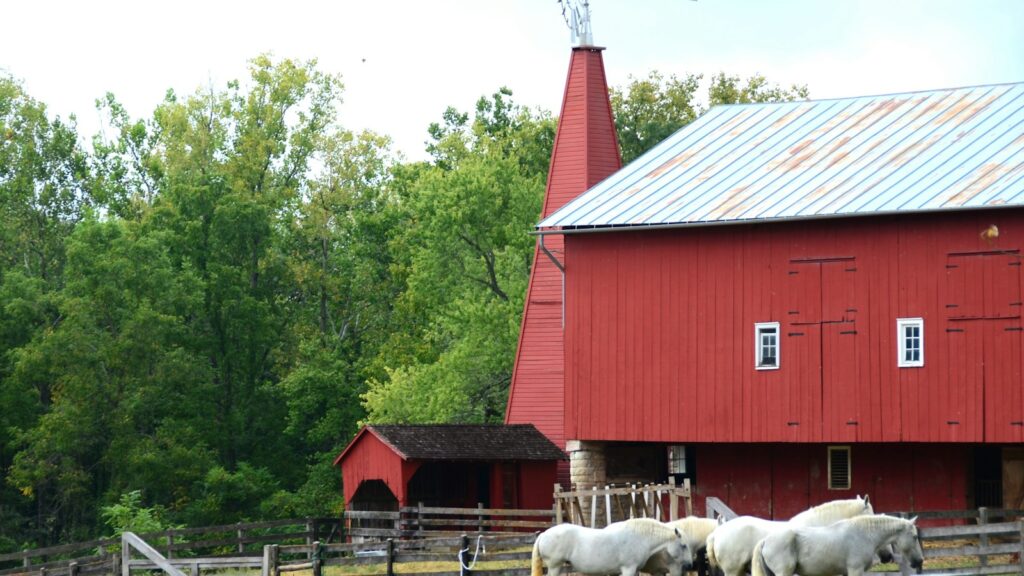
The layout and design of your barn facility plays a crucial role in chore efficiency, with poorly designed spaces often doubling work time. Modern barn designs incorporate features like central feed rooms that minimize walking distance and strategic placement of water sources, tack areas, and wash racks to create logical workflow patterns. Some innovative designs include built-in feed delivery systems where grain can be dispersed from a central location to individual stalls. The incorporation of wider aisles accommodating machinery and thoughtful placement of doors and gates can significantly reduce time spent on daily tasks. Even simple considerations like placing frequently used items at eye level and installing adequate lighting can save precious minutes that accumulate into substantial time savings over weeks and months.
The Revolution of Automatic Feeding Systems
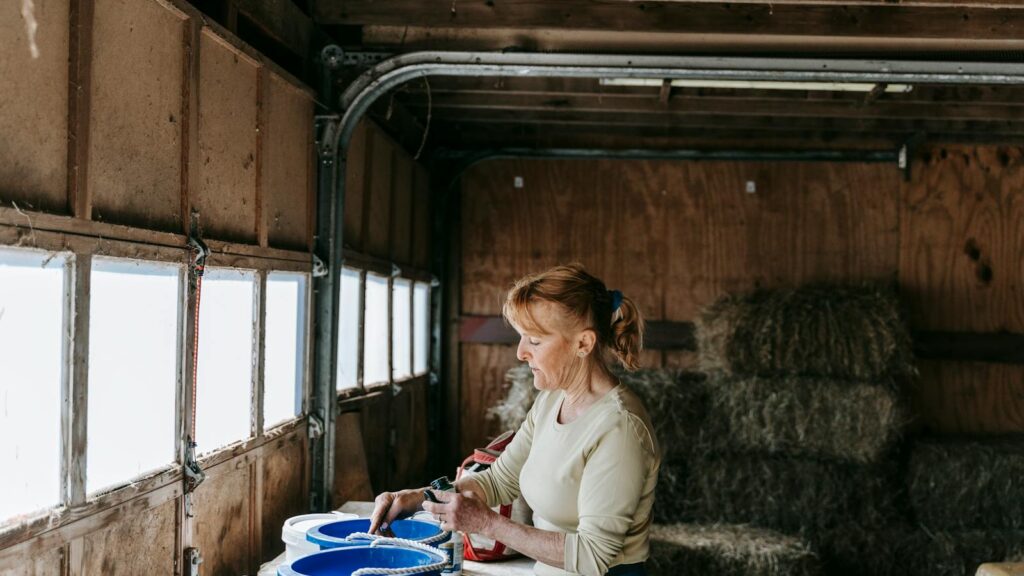
Automatic feeding systems represent one of the most significant advancements in barn chore efficiency, with options ranging from simple timed feeders to sophisticated programmable systems. These devices can dispense measured amounts of grain or hay at preset intervals, ensuring horses receive consistent meals even when handlers aren’t present. Advanced systems can be programmed to provide different feed amounts to specific horses and can be monitored remotely via smartphone applications. While initial installation costs range from $500 for basic models to several thousand for comprehensive systems, many owners report the investment pays for itself through reduced labor costs and improved horse health due to consistent feeding schedules. These systems prove particularly valuable for operations with limited staff or owners who cannot be present for every feeding time.
Hydration Made Simple: Automatic Waterers
The daily task of ensuring clean, fresh water for horses can be surprisingly time-consuming, with traditional methods requiring multiple trips carrying heavy buckets or dragging hoses. Automatic waterers eliminate this labor by maintaining consistent water levels through float mechanisms similar to toilet tanks or pressure-sensitive designs. Modern systems feature frost-free technology for cold climates and include filters to ensure water quality. Many automatic waterers are designed with easy-clean reservoirs that can be emptied and sanitized in minutes rather than the lengthy process of scrubbing and refilling multiple buckets. Beyond time savings, these systems reduce water waste and ensure horses have continuous access to fresh water, potentially improving health outcomes and reducing colic risk associated with irregular water consumption.
Reimagining Waste Management with Innovative Stall Designs
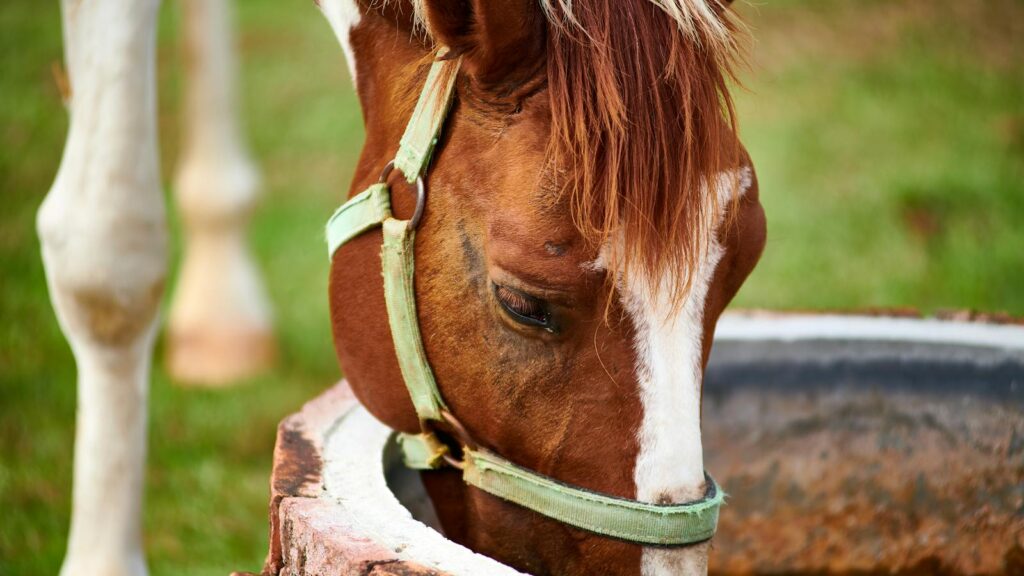
Mucking stalls typically represents the most time-intensive and physically demanding barn chore, but innovative stall designs are changing this reality. Systems like ComfortStall feature sealed, padded flooring with minimal bedding requirements, dramatically reducing the volume of waste that needs removal. European-style stables often incorporate automatic manure removal systems where waste falls through slatted floors onto conveyor belts below. The emerging “paddock paradise” or “track system” approach eliminates traditional stalls entirely, housing horses in a more natural environment that mimics their natural movement patterns and distributes manure more naturally across a larger area. Even simple innovations like specialized mucking tools with ergonomic designs can reduce strain and increase efficiency during this essential daily task.
The Time-Saving Potential of Strategic Bedding Choices
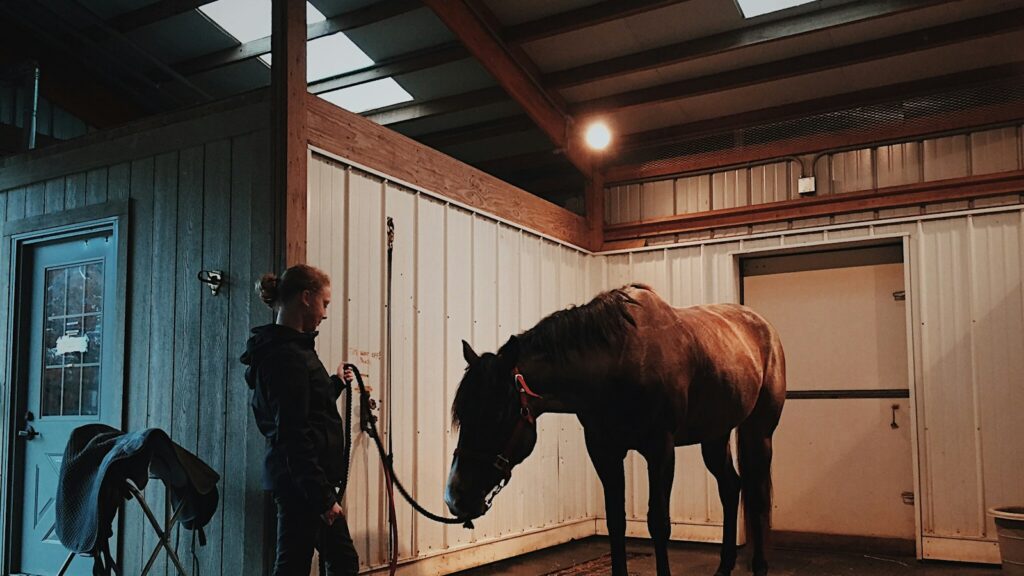
The bedding material you select significantly impacts cleaning time, with various options offering different advantages for efficiency-minded horse keepers. Pelleted bedding products typically require less frequent complete stall stripping and produce less dust while providing excellent absorption. Wood shavings remain popular for their availability and mid-range cost, though they can be bulky to store and dispose of. Straw, while traditional, often creates the most labor as it’s harder to separate waste from clean bedding. Newer innovations like paper-based products and specialized hemp bedding claim to reduce mucking time by up to 30% through superior absorption and easier waste identification. Some operations have found success with specialized stall mats that require minimal bedding material, substantially reducing daily maintenance time and bedding replacement costs.
Leveraging Technology for Barn Management
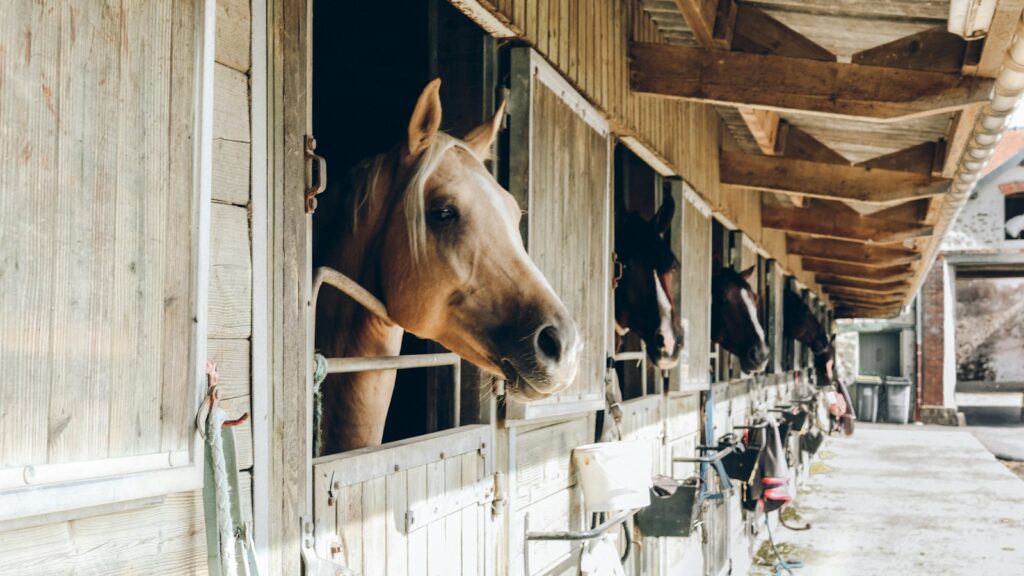
Digital tools have transformed barn management, with specialized software and apps streamlining everything from feeding schedules to healthcare records. Modern stable management platforms allow owners to track feed inventory, schedule veterinary appointments, and manage staff responsibilities from any internet-connected device. More sophisticated systems incorporate QR codes on stall doors that, when scanned, display that horse’s specific care requirements, medication schedules, and feeding instructions. Some facilities have implemented automated text notification systems that alert owners or staff about maintenance issues, weather concerns, or security breaches. These technological solutions reduce miscommunication, ensure consistency in care routines, and provide valuable data that can be analyzed to further optimize barn operations over time.
Group Housing Systems for Natural Horse Management

Group housing arrangements represent a paradigm shift from traditional stabling, potentially eliminating many time-consuming barn chores entirely. In natural boarding or “open barn” systems, horses live in social groups with constant access to shelter, forage, and water, more closely mimicking their natural lifestyle. These setups typically require significantly less daily maintenance as horses distribute manure across larger areas, reducing the concentration of waste. Automatic hay feeders designed for group settings can be filled weekly rather than daily, and the increased movement of horses in these environments often results in better overall health with fewer veterinary issues. While not suitable for all horses, particularly those requiring specialized care or with behavioral challenges, group housing systems can reduce daily care time by as much as 70% compared to traditional stabling arrangements.
Mechanization of Heavy-Duty Barn Tasks
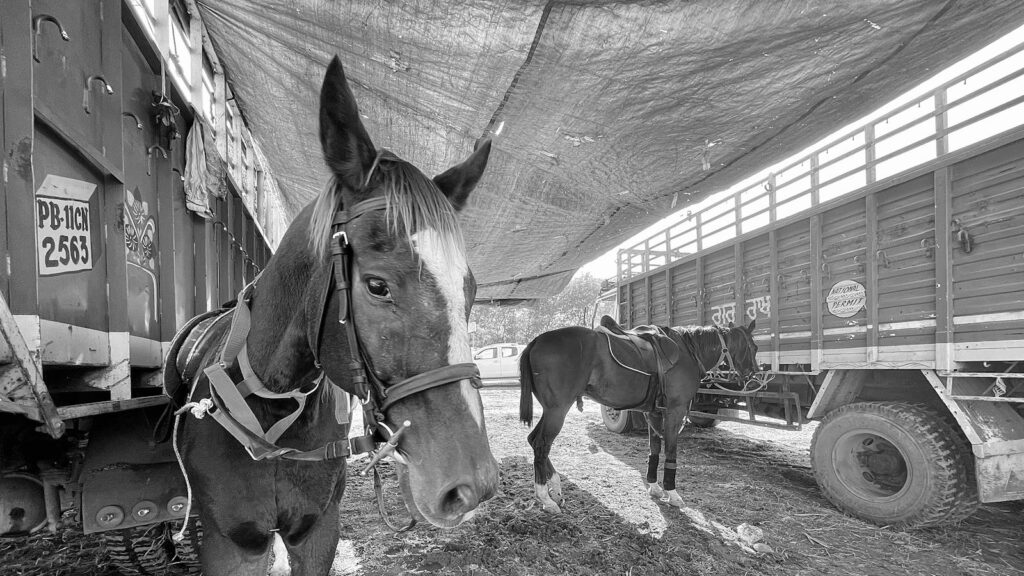
Small machinery investments can dramatically reduce the physical burden and time requirements of barn maintenance. Compact tractors or utility vehicles with specialized attachments transform labor-intensive tasks like spreading bedding, moving hay bales, or cleaning riding arenas from hours of manual labor to quick, efficient processes. Electric wheelbarrows capable of handling heavy loads make waste removal faster and less physically taxing, particularly valuable for older caretakers or those with physical limitations. Even basic tools like manure vacuums for paddocks or automated stall cleaning systems can reduce daily maintenance time by 50% or more compared to traditional methods. The initial investment in appropriate equipment typically pays dividends through labor savings, reduced physical strain, and the ability to maintain larger facilities with fewer staff members.
The Power of Routine and Chore Scheduling

Establishing efficient routines often yields as much time savings as implementing new technologies or equipment. Creating detailed chore charts with optimized task sequencing eliminates wasted movement and prevents the inefficiency of revisiting the same areas multiple times. Strategic scheduling, such as performing related tasks together or grouping horses with similar needs, can streamline the workload considerably. Many successful barn managers implement the “clean as you go” philosophy, addressing small maintenance items immediately rather than allowing them to accumulate into larger, more time-consuming projects. Training all handlers to follow consistent protocols ensures tasks are completed to standard regardless of who performs them, reducing miscommunication and preventing the need for work to be redone.
Outsourcing Options for Specialized Barn Tasks

For some facilities, outsourcing certain aspects of horse care provides the most efficient solution, particularly for specialized or intermittent tasks. Services like professional shavings delivery with stall stripping and rebedding can transform a labor-intensive weekly chore into a simple scheduled service. Hay delivery companies now offer options for direct stall or feeder filling, eliminating the need to handle heavy bales repeatedly. Mobile equine service providers can handle routine care like teeth floating, vaccinations, and hoof trimming during single coordinated visits rather than multiple appointments. Even basic facility maintenance like fence checking, pasture management, or equipment repair can often be more efficiently handled by specialized contractors who bring appropriate tools and expertise, freeing barn staff to focus on direct horse care activities.
Finding Balance Between Efficiency and Quality Care
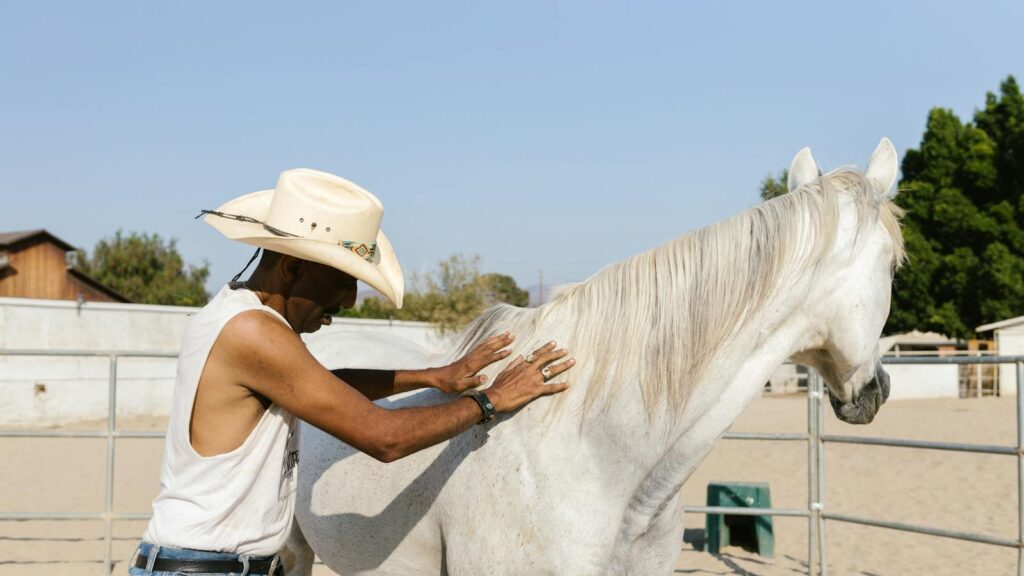
While pursuing efficiency, equestrians must carefully balance time-saving methods with maintaining high-quality horse care standards. The most efficient systems maintain or enhance horse welfare while reducing human labor, rather than cutting corners that might negatively impact equine health or happiness. For example, automatic feeding systems should still provide appropriate forage amounts and feeding intervals that support digestive health. Even with labor-saving equipment, horses still require regular human interaction for training, health monitoring, and socialization. The most successful efficiency systems incorporate regular quality control checks to ensure that mechanized or automated processes are functioning properly and meeting the intended care standards. Ultimately, the “most efficient” barn is one that achieves a harmonious balance between labor reduction and exceptional horse care.
conclusion
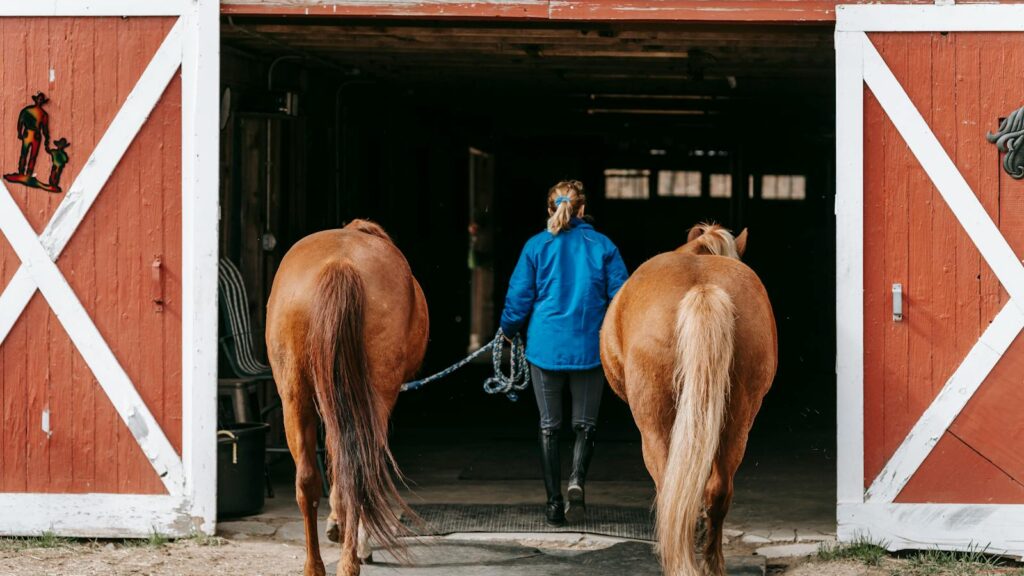
The quest for barn chore efficiency continues to evolve with new technologies, innovative management systems, and creative approaches to traditional horse keeping challenges. While no single solution works for every equestrian facility, combining appropriate technology, thoughtful barn design, and strategic management practices can transform daily maintenance routines from exhausting ordeals into manageable tasks. By implementing even a few of these efficiency measures, horse owners can reclaim valuable time to spend actually enjoying their horses rather than just maintaining them, creating a more sustainable and satisfying equestrian lifestyle for both humans and horses alike.







